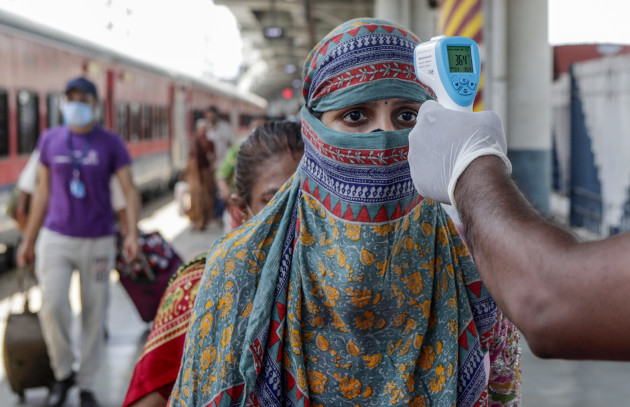India has surpassed another milestone as the number of deaths from the Coronavirus in the country has exceeded 300,000.
The number, as recorded by the Indian Ministry of Health, comes at a time when slowing vaccine deliveries have spoiled the country’s battle against the epidemic, forcing many to miss their footage, and a rare but fatal fungal infection affecting Covid-19 patients has raised doctors’ anxiety.
The death toll in India is the third highest reported toll in the world, accounting for 8.6% of the approximately 3.5 million deaths due to the Coronavirus globally, although the real numbers are believed to be much greater.
Today the Ministry of Health reported 4,454 new deaths in the past 24 hours, bringing the total deaths in India to 303,720.
It also reported 222,315 new infections, bringing the total to nearly 27 million since the start of the pandemic.
Both are almost certainly less than certain.
A patient infected with COVID-19 takes oxygen in a car outside a government hospital in Guwahati.
Source: Anupam Nath
The first known Covid-19 death in India occurred on March 12, 2020 in the southern state of Karnataka. It took seven months to reach the first 100,000 dead.
The death toll reached 200,000 in late April.
The next 100,000 deaths were recorded in just 27 days after new infections swept through busy cities and rural areas alike, plunging health care systems to the brink of collapse.
Average deaths and daily cases have decreased slightly in the past few weeks, and the government said Sunday it was conducting the largest number of Covid-19 tests, with more than 2.1 million samples tested in the past 24 hours.
Lack of oxygen
From remote Himalayan villages in the north, across the vast wet central plains, to sandy beaches in the south, the pandemic has engulfed India’s underfunded healthcare system after it rapidly spread across the country.
In the capital, New Delhi, residents died at home without oxygen as hospitals ran out of limited supplies.
In Mumbai, Covid-19 patients have died in crowded hospital corridors.
A health worker checks travelers for COVID-19 testing at a train station in Mumbai, India.
Source: Rajanesh Kakadi
In rural villages, fever and shortness of breath caused people to be infected before testing for the Coronavirus.
While major cities have seen signs of improvement in recent days, the virus has not ended in India.
No news is bad news
Magazine support
is yours Contributions You will help us keep providing the stories that matter to you
Support us now
It appears to have already caused losses in the country’s vast rural areas, where the majority of the population lives and where healthcare is limited.
In recent weeks, hundreds of bodies were washed away by waves on the banks of the Ganges River in Uttar Pradesh.
Many others are found buried in shallow graves along its sandy banks.
This has raised concerns that they are the remains of Covid-19 victims.
The vaccination campaign in India has also slowed down recently, and many states say they do not have enough vaccines to give it.
The world’s largest vaccine-producing country has vaccinated just over 41.6 million people, or just 3.8% of its 1.4 billion population.
Today, the federal government has enabled registration at government-run vaccination centers for those between the ages of 18 and 44 to «reduce vaccine wastage.»

«Lector profesional. Jugador galardonado. Aficionado a los zombis. Adicto a las redes sociales. Experto en tocino. Erudito en Internet»
